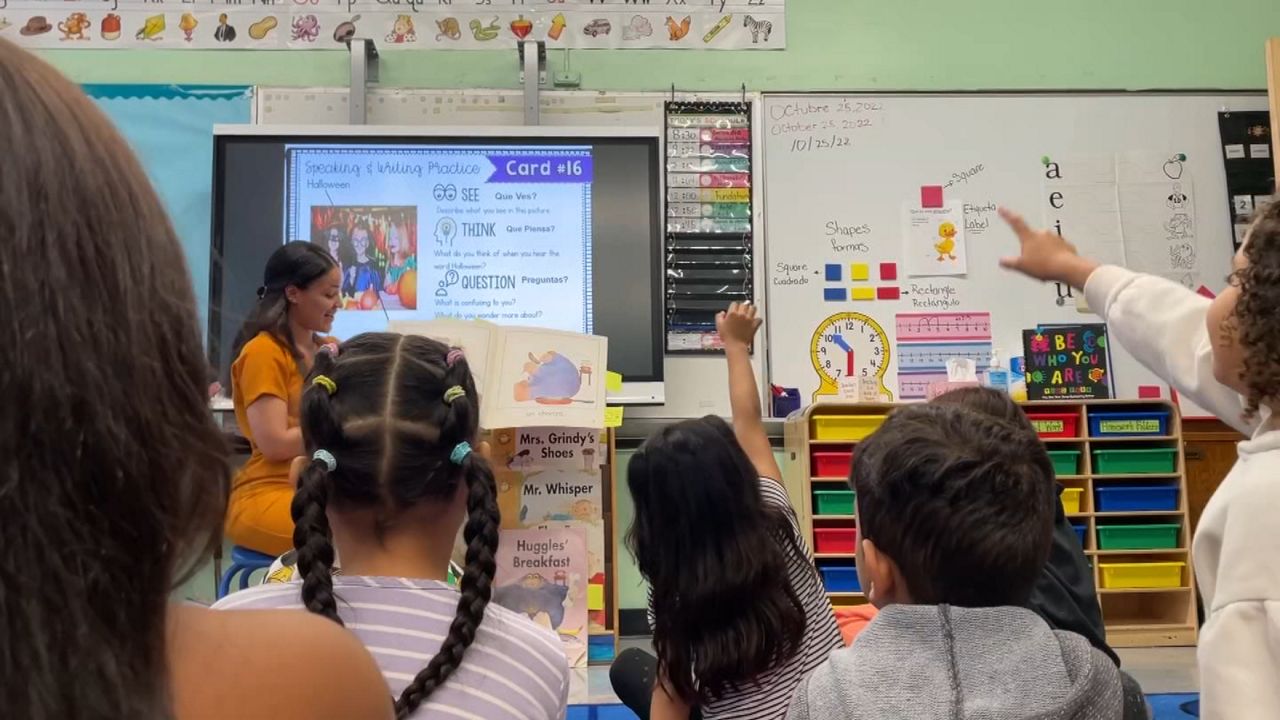Over the last two years, public schools have welcomed thousands of children who speak little or no English — many of whom wind up in classes where little or no instruction is done in their native language.
At one school on the Lower East Side, a new program is being launched to help them learn English while also learning in their native Spanish.
Fabiola Gonzalez teaches at the University Neighborhood Middle School on the Lower East Side.
“I love it. It's amazing because they come in with such [a] desire to learn, and we’ve got to capitalize on that, right? They don't come empty. They come with so many experiences,” she said.
In the last two years, schools have scrambled to set up programs to serve thousands of new English language learners.
Typically, English as a New Language classes strongly emphasize learning English. Students in the class may have many different home languages, which are rarely used. It can be, as Principal Laura Peynado Castro put it, a very sink-or-swim environment.
But at the school, they’re aiming to do something different.
“I want them to find themselves in a community where they're welcome, where they're seen, where they're loved, where they can learn in their native language — while also learning a second language,” Peynado Castro said.
Peynado Castro came to the city from the Dominican Republic at 12 years old, and was put into a transitional bilingual class — where instruction begins in both languages but increasingly moves to English.
“I didn't feel that my native language was valued the same way as the English language,” she said.
Even as she learned English, not being able to learn in her native language was something she missed.
“I craved — when I say craved, I just wanted to read literature in Spanish. That was something that was not accessible to me until, like, sophomore year when I was able to take AP Spanish, because I was fluent in Spanish. Once I made it to college, I made a concerted effort to take classes in Spanish, so I took religion in Spanish. I took history in Spanish,” Peynado Castro said.
She wants that for her students, too.
“I think our students need to understand that they can engage in critical thinking, and creative writing, and academic language using their native language," she said.
Her school is building a one-way dual language program.
In a typical Spanish dual language program, half the students speak English at home, and half speak Spanish at home. Instruction at school is split between both languages — so the English speakers are learning Spanish, and the Spanish speakers are learning English, all while studying their other subjects.
But in a one-way dual language program, all the students start with the same home language, in this case, Spanish. And the students will learn in both languages.
The program hasn’t officially launched yet. But when NY1 visited, Gonzalez ran through flash cards with students to acquire power words in English. Later in the class, they’re learning about democracy, with the option to answer in English or Spanish, allowing them to express the kinds of thoughts they might not know how to share in English yet.
One student, writing in Spanish, questioned why some countries have democracy, while others do not.
“We have to dismantle the misconception that speaking your home language is not is not a good thing,” Gonzalez said.
She says it hasn’t slowed students down in acquiring English.
“My mom is feeling happy because I learn new words,” a 13-year-old student, who arrived in the country about a year ago, told NY1 in English.
“I feel good and happy because I have teacher, Ms. Gonzalez, [who] is helping, helping me and supporting me,” another 13-year-old student, who arrived about a year ago, said, also in English. “I help my mom when she go to, when she [goes] to hospital, because she [doesn't] know, or speak English, she needs me.”
The new program will officially launch next year, and will be open to students citywide.




_PKG_Dual_Language_Clean?wid=320&hei=180&$wide-bg$)

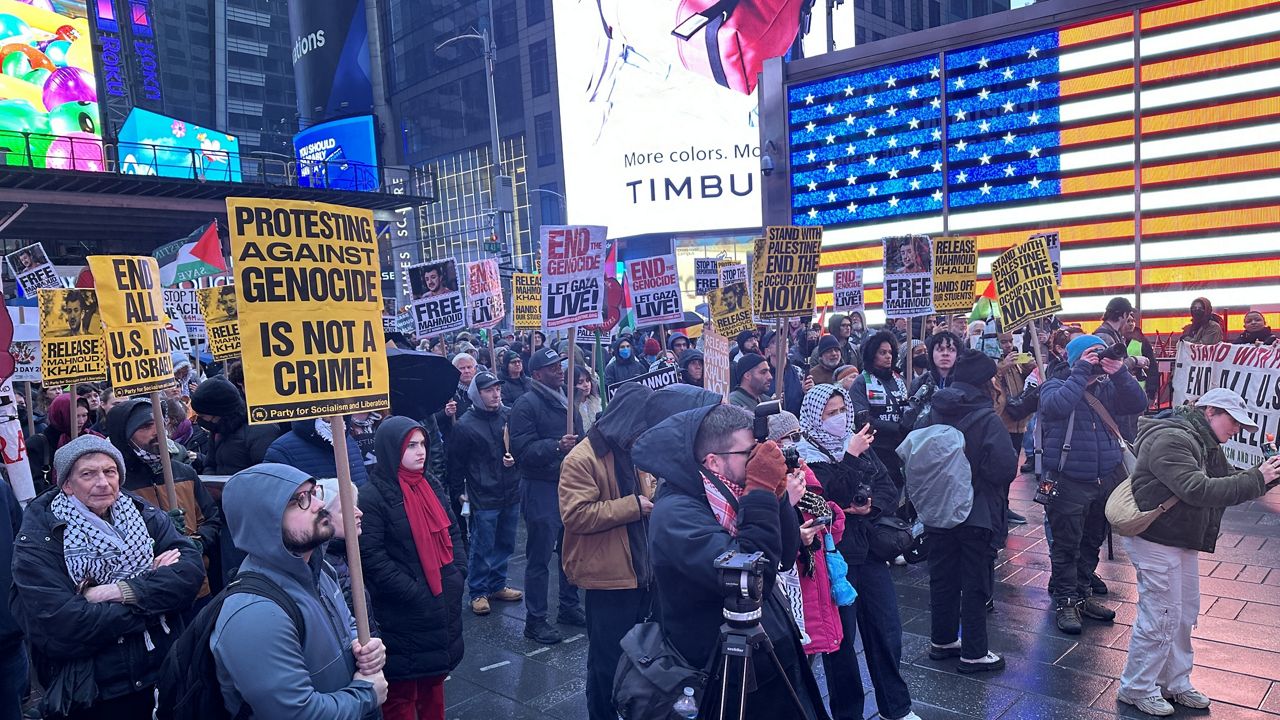
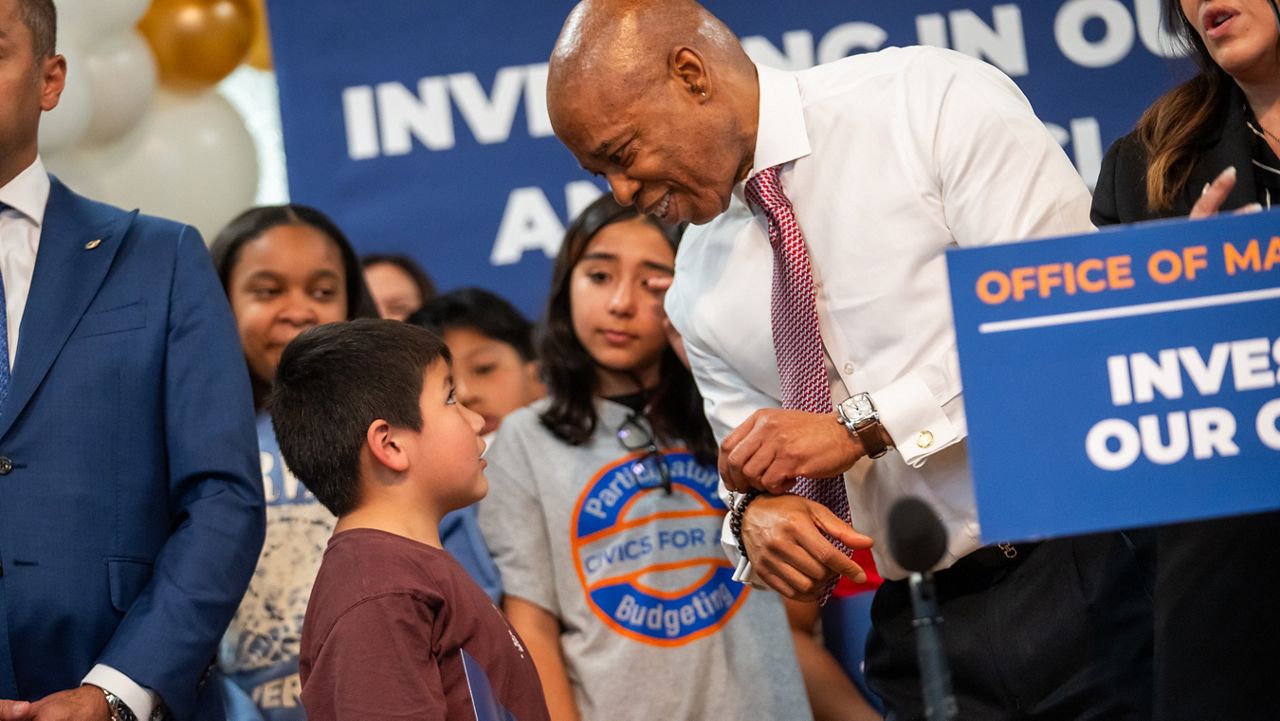
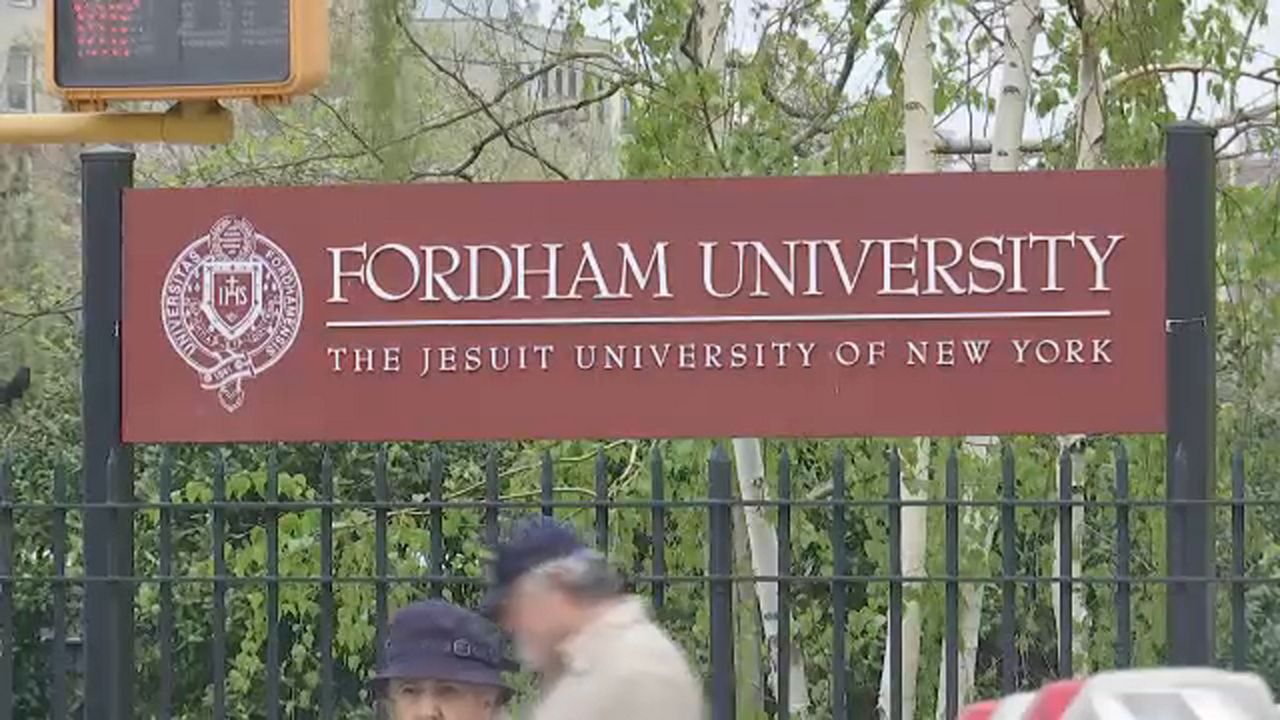
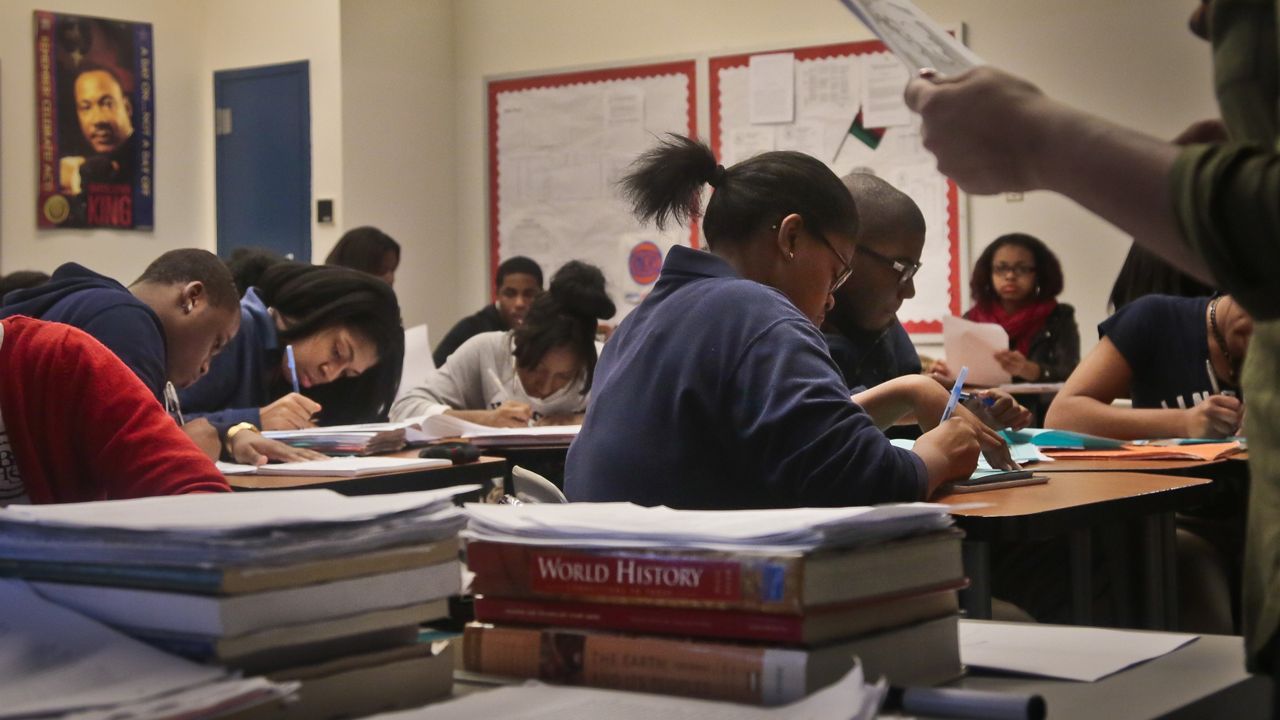
_CGPK_Mn_Columbia_Students_Chained_CG)
